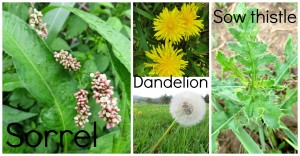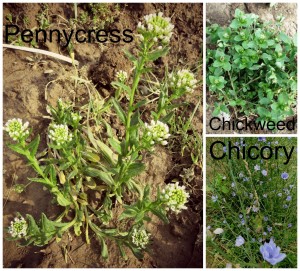April showers bring May flowers, and weeds. Weeds might be your least favorite thing about gardening, but they are good indicators of soil health, specifically the pH of your soil.
pH
pH is a measurement of acidity or alkalinity on a scale of 1-14. A pH of 7.0 is neutral; above 7.0 is alkaline and below 7.0 is acidic. Optimal soil pH for most plants is 6.0-7.0.
The soil in your region has a natural pH determined by composition, level of organic matter, precipitation and the local flora. Additionally, gardeners affect soil pH with fertilizer, irrigation and the plants they grow. Synthetic fertilizers burn soil. Too much irrigation causes nutrient leaching, which gradually turns soil acidic. Planting legumes and cover crops helps push pH back toward neutral.
Gardeners can amend soil with lime, sulfur or organic materials to achieve a desired pH, or they can choose to grow things suited to their soil’s current pH. For example, if you have acid-indicating weeds it is likely acid-loving blueberry bushes will thrive in your soil.
Weeds indicating acidic soil:
Eastern Bracken
Buttercup
Knotweed
Cinquefoil
Dandelion
Nettle
Plantain
Sorrel
Sow thistle
Oxeye daisy
Hawkweed
Knapweed
Mosses
Weeds indicating alkaline soil:
Stinkweed
Chickweed
Spotted spurge
Chicory
Queen Anne’s lace
Bellflower
Field Peppergrass
Goosefoot
Pennycress
Gromwell
Wormwood
Knowledge is power
The presence or absence of weeds listed above informs you of your soil’s pH; it does not deem your soil “good” or “bad.” Several of these weeds also indicate fertile soil.
Weeds indicating fertile soil:
Burdock
Chickweed
Fat Hen
Groundsel
Pigweeds
Pokeweed
Purslane
Queen Anne’s lace
Foxtail
4 more soil posts
- Prepare garden soil for spring planting March 6, 2015
- How to test your garden’s soil Jan. 20, 2015
- How do I know if the soil in my garden is healthy? March 11, 2014
- How do I test my soil? March 4, 2014















